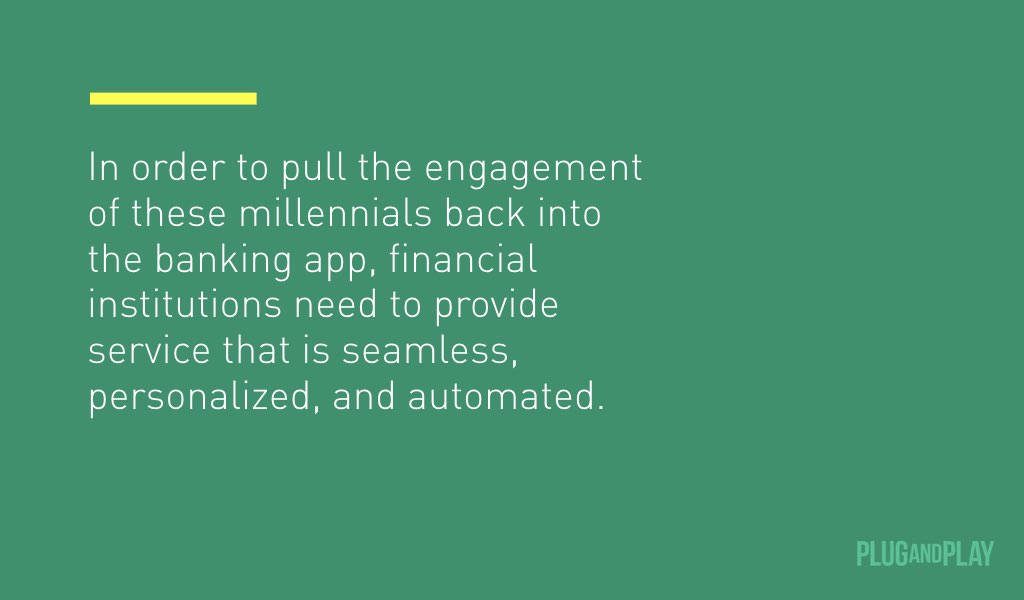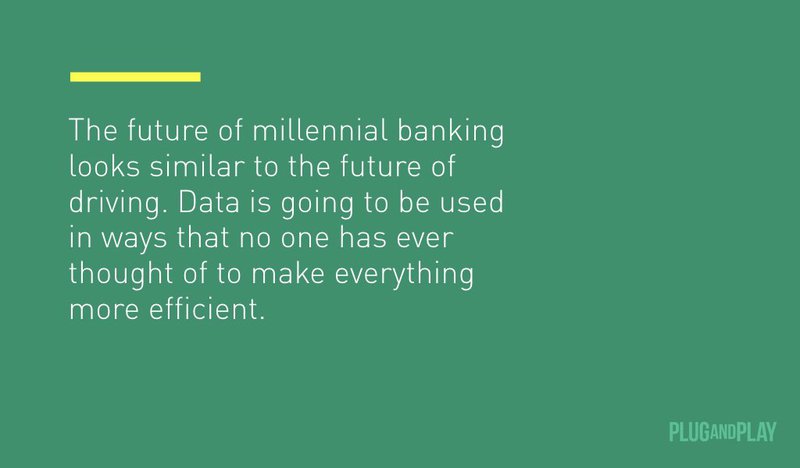The Future of Millennial Banking

The changing of the guard is upon us. Millennials now make up over 33% of the American workforce, and that number is only increasing. Currently, the financial stability of these individuals is terrible with almost 34% of them not having a single dollar in savings.
Millennials now make up over 33% of the American workforce.
As the wealth transfers to this new generation, financial institutions need to begin offering the advanced tools that millennials are expecting to manage their financial situation. This is much easier said than done, so in order to aid in determining what these tools are we are going to look at what the future of millennial banking looks like and how financial institutions can be prepared for it.
First, it is important to know that millennials prefer to use tools from their financial institutions. In fact, according to the FIS consumer banking pace index, banked millennials are four times as likely to use a personal finance tool from their primary financial institution as from any other source. However, these financial institutions need to provide better products for these millennials to use. We know this because in that same report, FIS found that 91% of millennials can point to at least one personal finance benefit they would like their financial institution to provide via mobile. Currently, the only companies that are providing this advanced financial technology that these individuals want are fintech startup companies. In order to pull the engagement of these millennials back into the banking app, financial institutions need to provide service that is seamless, personalized, and automated.

Seamlessness
In order to provide an experience that works for all millennials, it must be seamless. Any time a user is required to enter a lot of information about themselves, their spending habits, and any other financial information, it can be expected that most won’t finish the signup process. The benefit of being a financial institution is that there is already access to the user’s financial information. In order for a product to work in the future of millennial banking, it must be able to function with little to no input from the user.The next trick is building it so that it improves if the user chooses to go in and enter additional information. In the past, this wouldn’t have been possible, but with the improvements in machine learning we are able to learn a lot more with a lot less information. When creating a seamless experience, it is important to remember that every experience still needs to be personalized or else you fall into the trap of creating a solution that only works for a handful of people.
Personalization
Personalization is absolutely imperative to the future of millennial banking because there are so many options available for millennials to use. If your product doesn’t work for their exact situation, they will leave to find one that is.One thing you can be certain of is that everyone goes through life at a different pace. While one person is married with kids at 21 years old, another may be looking around to buy their first home. This means that their financial situation is going to look completely different. One needs advice on how to save for a down payment on a mortgage while another needs help setting up their 401k. This means that you need to provide products that recognize where each person is and provides to correct help and product offers.
Just looking at product marketing, almost half of millennials say that their bank does not send them marketing materials that are relevant to their financial needs. However, according to the same source, almost 75% of millennials say that they don’t receive too many offers from their financial institution. This means that there is a huge opportunity to market additional banking products to existing customers, as long as they are relevant to their financial situation. As banking becomes even more digital, providing a seamless and personalized experience is impossible without automation.

Automation
Automation is needed to hold everything together. A seamless experience sounds great but automation finds the correct data to put in the correct places. Personalization is an amazing feature, but speaking with every individual to determine their needs and offer the best products just isn’t possible for humans. Instead, using automation that is made possible by machine learning can provide those suggestions immediately.At Monotto, we have created a product with this future in mind. Monotto is an automated saving and engagement tool that integrates directly into your financial institution's app and website. Once an account holder opts in, it automatically determines a safety net goal based on their financial situation. This requires no input from the user but if they choose to create additional saving goals like saving for a house, car, or vacation, we also help reach those goals.
From that point on, money automatically gets transferred out of their checking account and into their savings account towards these goals with micro-transfers. These saving transfers happen every 2-4 days. The amount transferred is determined by our algorithms, which can calculate how much money they can handle saving at that exact moment without affecting the user’s normal spending habits. Additionally, our platform can use the account holders goals as well as their financial situation to determine when the user qualifies for or may be interested in additional banking products or services. We can then market to them through the financial institutions communication lines.
The future of millennial banking looks similar to the future of driving. Data is going to be used in ways that no one has ever thought of to make everything more efficient. Just like self-driving cars are going make driving extremely safe, machine learning is going to make being financially prepared extremely easy. Ultimately, personal finance is going to be better. The financial institutions that embrace and enable this future will be the ones that come out on top.



